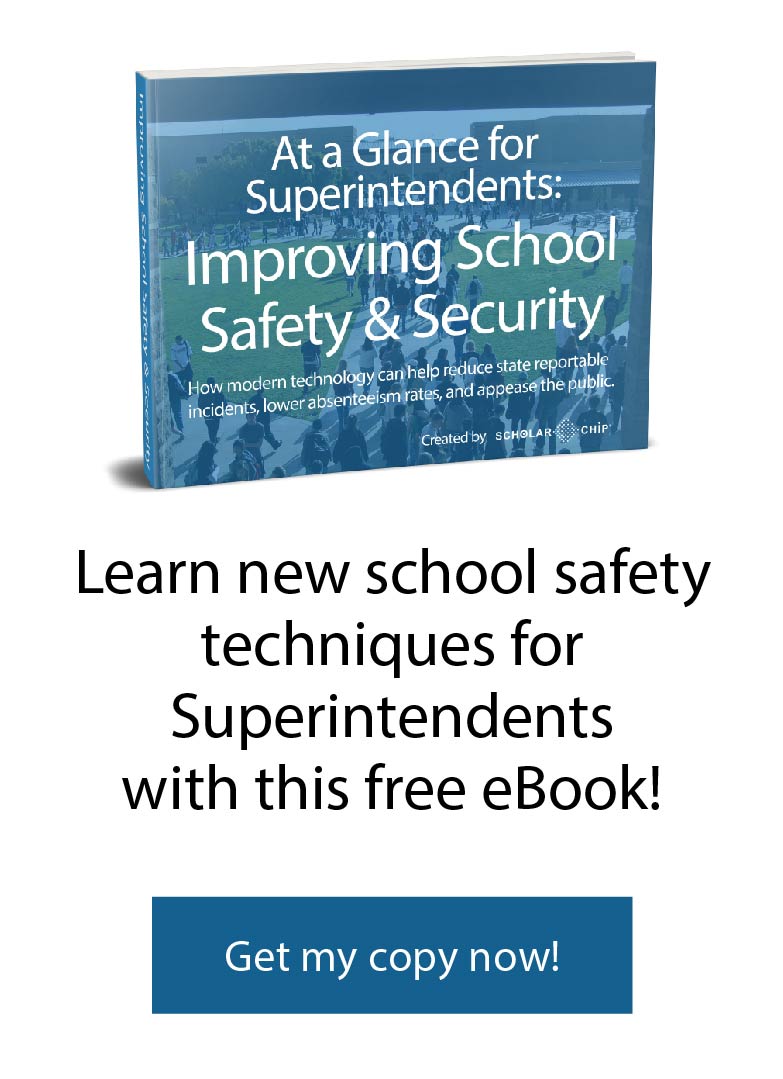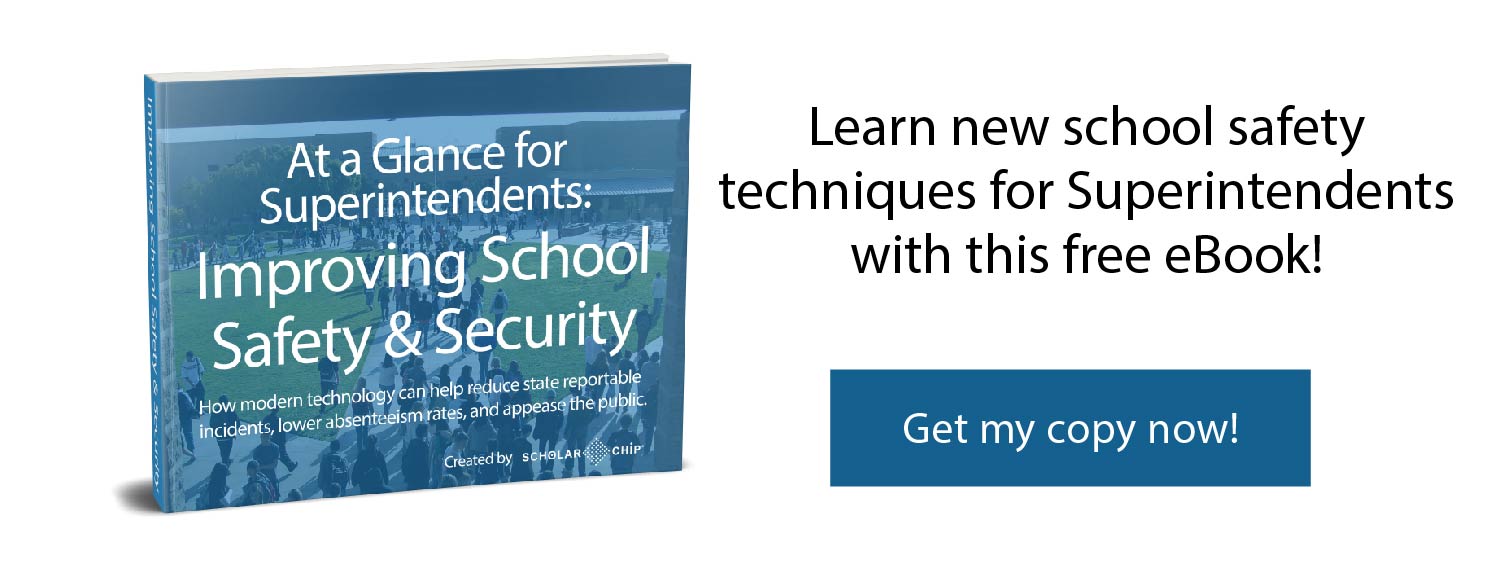There was a time when a school’s primary, and arguably only responsibility was to ensure that students had access to a quality education. Students attended classes, finished homework and while the occasional fight would break out, it was nothing that a few policies and a couple of teachers couldn’t handle.
The modern reality for schools, however, is much different. Research has shown that a variety of environmental factors can affect a student’s ability to learn and grow. While some of these factors – like good meals and a supportive home environment – are external to the school, many fall within a school’s walls, and consequently, their responsibilities.
School districts do their best to mitigate all the various factors that can prevent a student from receiving the most from their education. School breakfast and lunch programs are offered, and school counselors are available to help children with stress and other challenges, like behavioral needs.
Safety, however, is a basic human need. American psychologist Abraham Maslow identified safety and security as part of the base of his hierarchy of needs in his landmark paper from 1943, A Theory of Human Motivation, immediately after food, air, shelter, and rest. As a result of the increase of violence American schools have experienced in only a little more than a decade, detailed safety plans have been added to their list of responsibilities.
The definition of safety is many-faceted. The scope of the problem must be understood for schools to begin and evaluate the dizzying variety of modern security solutions available to them.
Grasping the Challenges of School Safety
Threats to the physical safety of school students, unfortunately, come from many sides. Schools are being forced to juggle security planning from multiple angles.
The right path might seem to be to build a school safety plan that addresses immediate dangers covering everything from fights to active shooters, and tardiness. A comprehensive school safety plan must proactively and holistically address all elements of school climate. It should simultaneously address the threats of today and mitigate the threats of tomorrow. A comprehensive plan should also take into account additional factors that allow schools to identify issues early.
For instance, attendance can be an early warning sign to safety issues, as well as being critical to a child’s success in school. When students experience mental health issues, like fear and depression, it becomes difficult for them to feel comfortable in school. This is where behavioral management comes into play as well. Bullying is another factor that can influence attendance. Accurately monitoring attendance is key to building proactive safety procedures.
Failing to address these safety concerns isn’t an option. Not only would students be at risk, but parental concerns can cause low enrollment and reduced funding. For those whose budgets are dependent on their rolls, lower enrollment means less money to use to address security concerns.
Regardless of enrollment, budgets can present problems for schools working to build comprehensive safety and security plans. Because the issue can have multiple elements, schools need a plan that addresses multiple factors. Without appropriate knowledge and planning, schools can lean toward expensive systems that do not mesh well and fail to cover the school’s safety holistically.
Approaching Modern School Safety
Because school safety is a complicated problem, it requires a plan that addresses both immediate situations as well as longer-term identifiers and solutions.
In-the-moment solutions are critical to keeping threats from entering school grounds as well as monitoring situations as they happen. Solutions like implementing a visitor management system, metal detectors, and room lockdown systems can keep students safe by preventing dangerous situations from occurring or escalating. Creating a plan centered around immediate threats not only can remove the opportunity to create a better learning environment for students, but also gives off the impression of imminent danger, which leads to increased anxiety in students, staff, and parents.
In a 2015 study on school crime and safety, 88% of middle schools reported at least one violent incident in the 2013-14 school year. Many of the types of events used to describe a violent incident in the study would not have been identified by systems like metal detectors–and as a result, the threat had unauthorized access into the building. Longer range solutions can help schools get to the root of potential issues before they become a problem.
Uncovering the roots of these issues, through counseling and bullying programs, plus intervention is needed as part of a complete school safety plan. A possible solution can include a behavior intervention system. Neither set of solutions–immediate threat prevention or longer-term identification and intervention–will work alone. Schools must consider safety programs that incorporate these elements while balancing the need to stay within budget.
Identifying the Right School Safety Solutions
The question becomes, then, what are the solutions that a school can put together to create a comprehensive safety plan? And what are the pros and cons of the various solutions?
Metal Detectors: Metal detectors can be an effective preventative tool. By identifying and preventing weapons from entering the school at all, metal detectors can stop an incident before it starts. However, these devices can be expensive, both to acquire and to operate daily because of the need for trained staff to man the entry points where the detectors are positioned. Additionally, they can give off the wrong message to parents regarding the level of threat the school faces and also cause unnecessary stress if used in schools with younger children.
Psychological and Sociological Intervention: School officials and lawmakers agree that one important element in addressing school violence is identifying and responding to mental health and substance abuse signals from students. One brief solution could be implementing a behavior management platform, or better known as ABE (Alternative Behavior Educator). This is a valuable approach that addresses school safety as well as the overall well-being of students through data-driven reports that quickly flag at-risk students. However, ensuring administrators and teachers are aware of what to look for and having highly-qualified counselors available to address student needs may require longer-term staffing and training plans. Addressing the mental health and well-being of students through behavior management will help identify issues before turning into something possibly violent.
Lockdown and Panic Buttons: Probably the most reactive and short-term of the solutions, lockdown and panic buttons serve one purpose – to protect students and alert authorities during an active shooter threat. Depending on how the system is implemented and activated, schools may experience false alarms. Also, these systems do nothing to prevent an incident. They exist only to prevent further injuries during an active attack.
Identity Management Platform with Smart ID Card: As a holistic approach to improve school safety plans, an identity management platform that uses a smart identity card and behavior management interventions is at the top of the list! The solutions this platform offers range from managing large group entry or even individual door access as a way to control building access and help schools keep accurate attendance, visitor screening, and data-driven reports. Traditional methods are outdated and rely too much on paper and pen. As a self-contained system, ScholarChip’s Identity Management Platform can be retrofitted to existing school systems and technologies. The cons of these systems are few, but include requiring new processes and staff training, and, although they are cost-effective, purchasing a new system like this should be a breeze of a decision. Returning visitors such as members of PTO or parents of special needs children will be given a smart ID card. This ID card will give the schools a way to monitor recurring visitors and allow them access to certain buildings within the campus.
Putting together a school safety plan that includes long-term solutions and addresses immediate threats can seem daunting. But you have to see the overall goal being accomplished. An effective plan must include many moving parts to create a school environment that is safe and welcoming, able to identify situations before they become threats, and protects students on a day to day basis.
ScholarChip is an all-in-one, cost-saving modern solution to help reduce school threats and address the important issues surrounding school safety. Data from students, faculty, and stakeholder are leveraged to manage school access, attendance, and behavior management through the platform tools to increase safety and promote the campus climate schools are looking for.
If you would like to learn more about how your campus can benefit from implementing ScholarChip’s platform, feel free to request a 1-on-1 security solution strategy session today!


